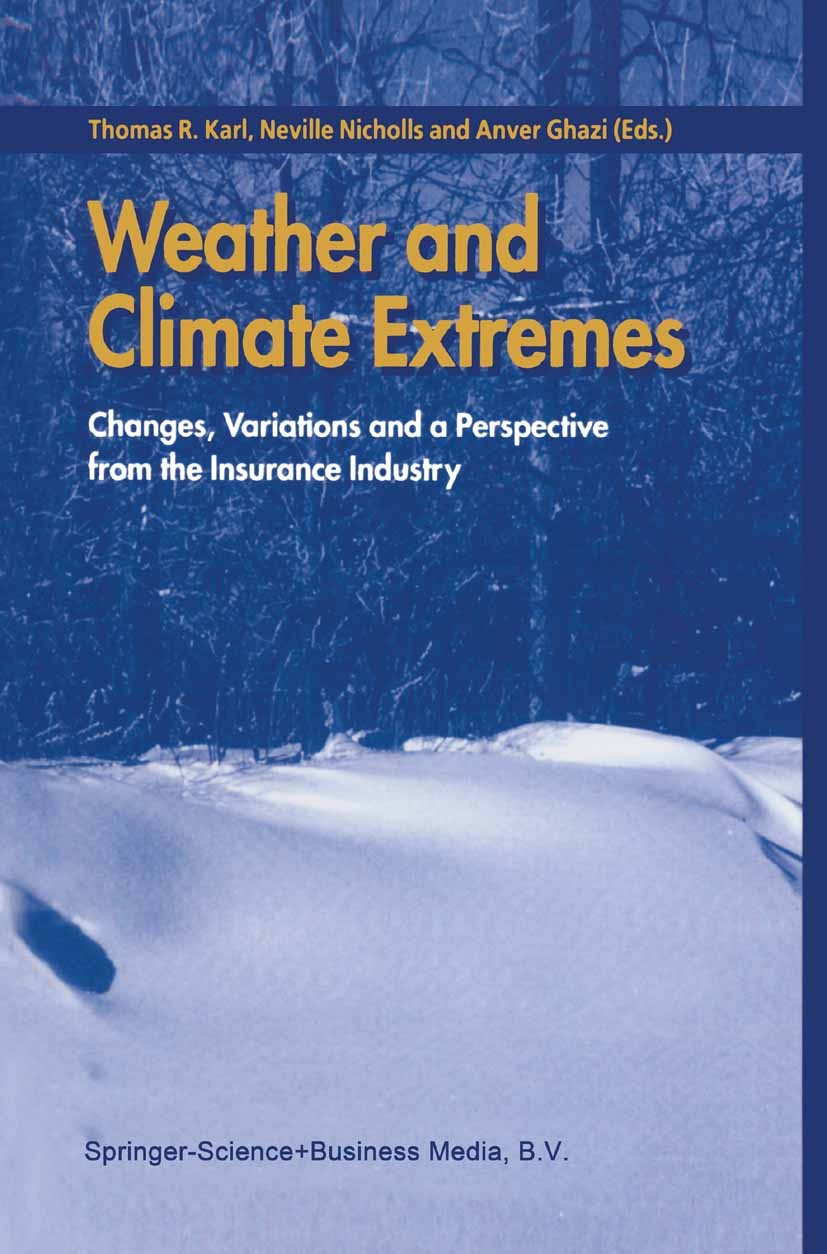新西兰奥特罗阿地区极端日降雨量的统计模型
IF 6.9
1区 地球科学
Q1 METEOROLOGY & ATMOSPHERIC SCIENCES
引用次数: 0
摘要
新西兰的极端降雨,以及如何在气候变暖的过程中最好地描述这些极端降雨的预期变化,利用非常大的区域气候模式模拟集合,在五个不同的气候变化“时代”(工业化前、现在和未来三个高于工业化前1.5°C、2.0°C和3.0°C的状态)进行了研究。探讨了非平稳广义极值(GEV)模型的不同构造,以确定哪种模型能够以最小的模型复杂性提供最准确的极端降雨估计。不同的GEV模型构造不同的参数(位置、尺度和形状)的数量,这些参数被认为随着气候变化而变化,总结为与南半球平均地表温度的线性依赖。非平稳性也以不同的方式进行了探索,在五个“时代”中分别安装了一个固定的GEV。这些不同的模型应用于全国八个地点的年最大单日降雨量,这些地点被选为全国各种降雨制度的广泛代表。在具有公平但不是巨大的样本量的情况下,例如具有长期历史记录的模式,其中只有位置和规模而不是形状和参数随变暖而变化的模式具有最严格的抽样不确定性,而不会引入实质性偏差。根据这个GEV模型,在所有8个地点,每100年一次的降雨量都随着变暖而增加,幅度从该国大部分地区的5%/°C到北部地区的8%/°C不等。这种变化是由位置参数的增加引起的,尺度参数只有比例增加,这与人为增加比湿度导致的极端降雨增加相一致。本文章由计算机程序翻译,如有差异,请以英文原文为准。
Statistical modelling of extreme daily rainfall over Aotearoa New Zealand
Extreme rainfall in New Zealand, and how best to characterise expected changes in those extremes as the climate warms, is investigated using very large ensembles of regional climate model simulations at five different ‘epochs’ of climate change (pre-industrial, present-day, and three future states at 1.5 °C, 2.0 °C, and 3.0 °C above pre-industrial). Different constructs of non-stationary Generalised Extreme Value (GEV) models are explored to determine which provides the most accurate estimates of extreme rainfall for the minimum model complexity. The different GEV model constructs vary the number of parameters (location, scale and shape) that are assumed to vary as climate changes, summarised as a linear dependence on Southern Hemisphere mean land surface temperature. Non-stationarity is also explored a different way, with a stationary GEV fitted separately within each of the five ’epochs’. These different models are applied to annual maximum one-day rainfall at eight locations around the country, chosen to be broadly representative of the various rainfall regimes countrywide. In situations with fair but not enormous sample sizes, such as with long historical records, the model in which only the location and scale, but not the shape, parameters vary with warming has the tightest sampling uncertainty without introducing substantial bias. According to this GEV model, 1-in-100-year rainfall increases with warming at all eight locations, ranging from about 5%/C in most of the country to 8%/C in the north. The change arises from an increase in the location parameter, with only a proportional increase in the scale parameter, consistent with extreme rainfall increases dictated by anthropogenic increases in specific humidity.
求助全文
通过发布文献求助,成功后即可免费获取论文全文。
去求助
来源期刊

Weather and Climate Extremes
Earth and Planetary Sciences-Atmospheric Science
CiteScore
11.00
自引率
7.50%
发文量
102
审稿时长
33 weeks
期刊介绍:
Weather and Climate Extremes
Target Audience:
Academics
Decision makers
International development agencies
Non-governmental organizations (NGOs)
Civil society
Focus Areas:
Research in weather and climate extremes
Monitoring and early warning systems
Assessment of vulnerability and impacts
Developing and implementing intervention policies
Effective risk management and adaptation practices
Engagement of local communities in adopting coping strategies
Information and communication strategies tailored to local and regional needs and circumstances
 求助内容:
求助内容: 应助结果提醒方式:
应助结果提醒方式:


